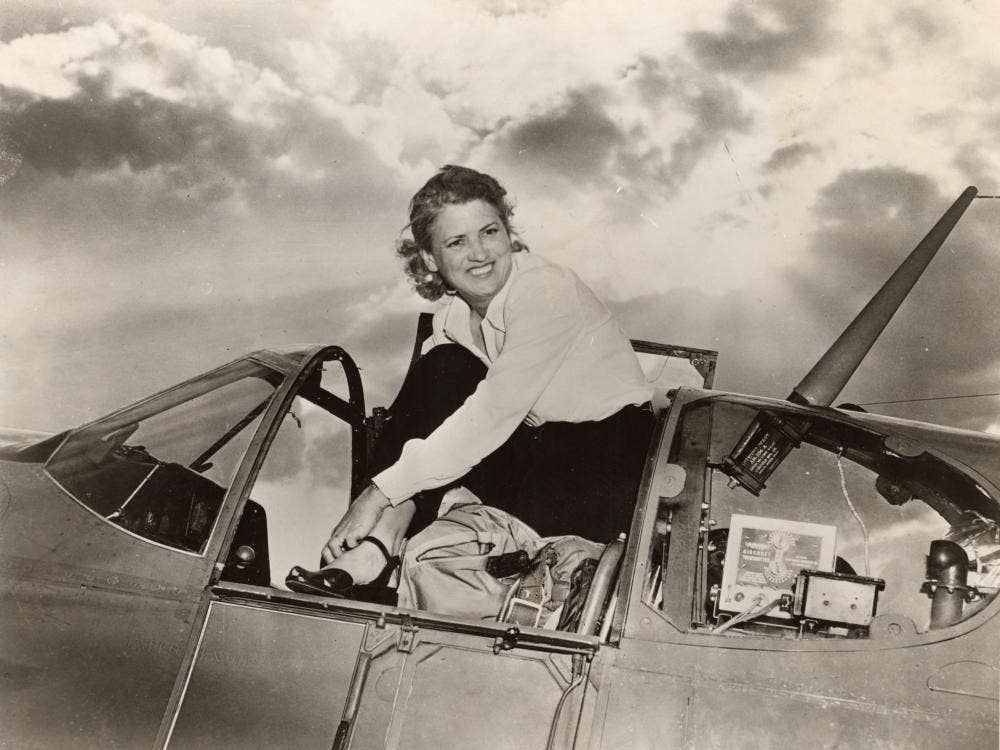Fastest Woman on Earth—70 Years Later
Jackie Cochran broke the sound barrier on May 18, 1953, confirming her place among elite test pilots.

Jackie Cochran broke the sound barrier on May 18, 1953, flying faster than Mach 1 and confirming her place among elite test pilots. [Credit: (National Air and Space Museum Archives, Smithsonian Institution]
To fly among the top test pilots at any stage of your career is an honor not meted out without a lot of hard work—proving not only one’s mettle but also diligence, perseverance, and inner strength. Those words especially ring true when speaking of Jacqueline “Jackie” Cochran, one of the most notable of that elite cadre.
On May 18, 1953, Cochran firmly established herself in history when she became the first woman to fly beyond Mach 1 in level, unboosted flight.
How did she get there? Well, it’s one of the best rags-to-riches stories in aviation history.
Cochran’s Early Days
Cochran was born Bessie Lee Pittman on May 11, 1906, in the rural Florida Panhandle. She took on her first jobs to pull herself out of poverty working in beauty shops by the time she was 11, eventually becoming a hairdresser. Her name “Cochran” stems from her first marriage to Robert Cochran, who died in 1925. She moved to New York—eventually working for Saks Fifth Avenue—where she met Floyd Odlum, a wealthy businessman, in the early 1930s, who supported her dreams to launch her own business—and to become a pilot.
She learned to fly in 1932 in a three-week cram session at Roosevelt Field on Long Island. From her earliest days of flying, she felt the need to make a good impression but also to soothe tensions around the “advent” of women flying. For example, Cochran’s continued use of cosmetics was one way to assure the general public that “nothing had really changed,” according to American Women and Flight Since 1940, by Deborah Douglas. She married Odlum in 1936.
And she flew—faster and faster, beginning to chase speed records by the time she had a few hundred hours under her belt. Cochran won the Bendix Transcontinental Air Race in 1938, as well as the Harmon Trophy—bestowed upon the top woman pilot in the U.S.
By the time the U.S. entered World War II, there were roughly 400 women who held pilot certificates in the country and were part of The Ninety-Nines, International Women Pilots Association. In 1941, Cochran was named president of The Ninety-Nines—and with civilian aviation sharply curtailed by the war, she continued to press forward on the concept she had first presented to Eleanor Roosevelt in 1939—that women could readily come to the service of the country to replace the pilot roles vacated by men who went off to fly in combat. She presented her concept in front of President Franklin Roosevelt, gaining the attention of General Henry “Hap” Arnold, the head of the U.S. Army Air Corps.
Though the idea didn’t gain traction at home, Cochran took her ideas to Great Britain, with the goal to supply women pilots to the British Air Transport Auxiliary. However, Arnold would become a lifelong supporter of Cochran. From those beginnings overseas—and the efforts of fellow race pilot Nancy Harkness Love—sprang a series of women pilot participation in the war: the Women’s Army Auxiliary Corps (WAAC), the Women’s Auxiliary Ferry Squadron (WAFS), the Women’s Flying Training Detachment (WFTD)—and the one that would crown them all, the Women Airforce Service Pilots (WASP).
Breaking the Sound Barrier
Cochran did not fly off into the sunset following the war—in fact, she flew higher and faster than ever before. The power behind the journey to her date with destiny and supersonic flight? The jet engine.
Eager to prove herself as one the best pilots, period—not just the best woman pilot—Cochran took to flying jets like one born to the breed. She worked with one test pilot from the era whose name is well known: Chuck Yeager was her mentor, and taught her the techniques she needed to fly beyond Mach 1. She notched many records along her quest, both for straight-line distance and in a closed circuit, by June 1953.
She was determined, however, to ensure she was the fastest woman—challenging the position held by Jacqueline Auriol of France. She succeeded—and then some. Perhaps the record she’s most known for happened on that day in May 1953 when, while flying a Canadair F-86 Sabrejet at Edwards Air Force Base, she became the first woman to break the sound barrier, with an average speed of 652.337 mph and surpassing Mach 1.
She would go on to set other records, including a string in 1962, at age 56.
#OTD in 1962, Jackie Cochran set 26 NAA records (24 of which still stand today) in her Lockheed JetStar. The flight route started in New Orleans and took her over Boston, Gander (Canada), Shannon (Ireland), London, and Paris before ending at Bonn, Germany.✈️ pic.twitter.com/siDctaB05P
— National Aeronautic Association (NAA) (@NatlAero) April 22, 2022
She remained active in both aerospace consulting and the political sphere through the rest of her life. Cochran died on August 9, 1980, in Indio, California, still the holder of more aviation records than any person—male or female.
List of Notable Records:
- First woman to break the sound barrier
- First woman to reach Mach 2
- First woman to land and take off on an aircraft carrier
- First woman to pilot a jet aircraft on a transatlantic flight
- First woman to make a landing solely by the use of instruments
- Only woman to be president of the Fédération Aéronautique International (FAI)
- First pilot to fly above 20,000 feet with an oxygen mask
- First woman to enter the Bendix Transcontinental Air Race

Sign-up for newsletters & special offers!
Get the latest FLYING stories & special offers delivered directly to your inbox






